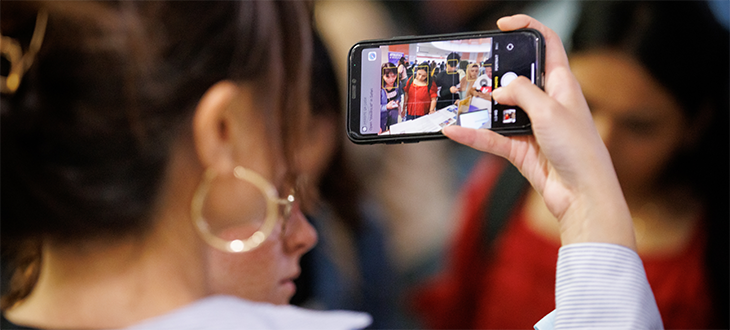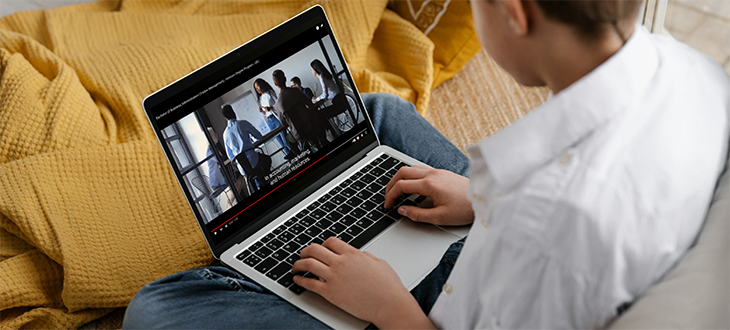3
Creating Compelling Content
Creating Compelling Content

Types of content on social media platforms
Across social networks, various recurring content types can help you reach your objectives. This chart provides an overview of suitable content types for various social media platforms.
| Social media platform | Suitable content types |
|---|---|
Text posts, images including photos or infographics, videos (short, long and live options) | |
X (formerly Twitter) | Text posts, images (photos or GIFs), videos (short-form, max 240 seconds) |
Images or graphics (singular or multiple as a carousel post, or vertical as an Instagram Story), videos (vertical videos as reels, longer vertical videos as IGTVs, live options) | |
Text posts, images (singular or multiple), videos (landscape) | |
TikTok | Vertical videos, and carousel image posts |
YouTube | Videos (long form (landscape), short-form (vertical) as YT Shorts |
With so many possibilities for content, it can be challenging to decide where to start! In addition to the kinds below, we’d recommend looking at some of the affiliated college accounts for inspiration on types of content to share across your platforms.
News
Stories from the GBC main webpage or media outlets that position students, faculty, and/or staff positively.
User Generated Content (UGC)
UGC is reposting content (photos or videos) from your community when it has the right message. UGC can help increase engagement and reach, hitting accounts that may not follow yours yet. As a best practice, ALWAYS ask for permission and tag the owner of the photo/video in the post caption.
Photos
Photos that display the George Brown College lifestyle (student/faculty success, campus life, etc.) are top performers on the corporate channels. There are lots of great approved photos to share from the George Brown Self Publishing System and the George Brown College YouTube Channel.
Videos
Short-form video content (less than 60 seconds) is extremely popular on social media. Always consider the platform or channel that you're posting to when producing and sharing video content. Pre-existing college video content can be viewed on the George Brown College YouTube Channel.
Events
Is your team involved in or hosting an event for their community? Social media is often recommended to promote the event in advance or to cover the event in real-time.
Podcasts
Have a new episode of your podcast? Tease the theme and topic of the episode in a social post! Bonus points if you can include engaging visuals and a link for where to listen!
Webinars
Hosting a webinar that will add value to your community? In addition to a visual, a top webinar social media post always includes details (think who, what, when, where, and why), and a link to register within the post copy!
What to stay clear of
While there is a plethora of content across social media that can be shared, it is also important to remember that the content we are creating and sharing is done so publicly and can be "viewed" as the opinion of the college/organization. With that in mind, below is a list of content that you should refrain from sharing as part of your affiliated social media presence:
Controversial topics
While you may have certain feelings towards various subjects, it’s important to remember your account’s connection to the college. For example, politics.
Your own college-wide statements
All official college-wide statements should be led by the corporate channels. Affiliate accounts are invited to re-share approved posts (for example, vaccine policy, closure messages, crisis announcements/comms).
Defamatory content
Refrain from posting or highlighting content that includes profanity. Keep the Employee Code of Conduct in mind when sharing content.
- Employee Code of Conduct - Academic Staff (PDF)
- Employee Code of Conduct - Administrative Staff (PDF)
- Employee Code of Conduct - Support Staff (PDF)
Trade secrets, confidential, or proprietary information about the college
Examples of confidential or proprietary information that should not be posted include marketing strategies, financial data, contract terms, research and confidential information about George Brown students, employees, donors or business/community partners.

How to create inclusive assets with AODA standards
In alignment with George Brown College's Accessible Media Policy and the Accessibility for Ontarians with Disabilities Act (AODA), any affiliate social media channel MUST ensure that they are sharing content that is as accessible as possible. Over the years, many social media platforms have incorporated new features to help improve the accessibility of their channels.
Alternative text image descriptions
Alternative Text (Alt Text) is a brief description of what’s happening in an image that is read aloud to viewers by screen readers. Platforms such as Facebook, Twitter and Instagram now can include image descriptions across posts.
Text size
Compliance with AODA's text size requirements not only broadens the audience that can comfortably access information and services online, but also reflects the college’s commitment to diversity, equity and inclusion. By prioritizing text size on social media, organizations can enhance user experience and improve accessibility, thereby contributing to a more inclusive digital environment.
Emojis
Some screen readers can read out Unicode emojis. When it comes to accessibility, use emojis sparingly and towards the end of your social message or post caption to improve user experience.
Do this: Welcome to the start of a new semester, Huskies🐺!
Not this: Welcome🎉, to the start of a new semester, 🐺Huskies!
Closed-captioned video content
It is best to include closed captions in your videos — whether you edit them directly onto the video or upload caption files — to ensure that your videos can be understood without sound.
Expert tip: Instagram now has a functionality where it will overlay closed captions on your stories!
VIDEO EXAMPLE:
Captions for Social Media (MP4)
Hashtags
While many think hashtags are accessible, it’s important to write them in Camel Case so that it is more legible. This small yet important change also assists automated screen readers.
Do this: #GeorgeBrownCollege
Not: #georgebrowncollege
Understanding user-generated content
Generating a loyal and dedicated following on social media is one of the top goals for organizations, businesses or even social media influencers.
In the realm of post-secondary education, our core audiences — which includes students, employees, faculty, alumni and leaders — exhibit a profound passion for their connection to the college. This excitement and passion entices our audiences to share their first-hand experiences at the college via pictures, videos, text, testimonials and more on their personal accounts. This content, when shared to social media, is what is known as User Generated Content (UGC).
Why is UGC important for a brand, affiliate or personal account?
UGC can make a positive impact on your account in many ways, including:
- An avenue for authentic content. This content is typically perceived by users as more trustworthy & authentic, as it comes first-hand from a user, versus a brand.
- Helps build brand credibility. A brand's credibility is reinforced when users share their positive experiences through user-generated content.
- Supports Community Building. When users share their genuine experiences, it fosters a sense of belonging.
- Content Stream. UGC is a great source of steady, fresh content, and is very cost-effective because it doesn't require the same amount of resources as internally developed new social content.
- Time effective. UGC can be collected every month and banked for future posts.
When looking to leverage UGC as part of your social strategy, it's always best practice to ask for permission and give credit to the original poster in the post copy and tags.
Utilizing UGC can strengthen the bond between a brand and its core audience, simultaneously amplifying brand visibility. To miss out on the advantages of UGC, the only mistake one can make is not embracing it.
